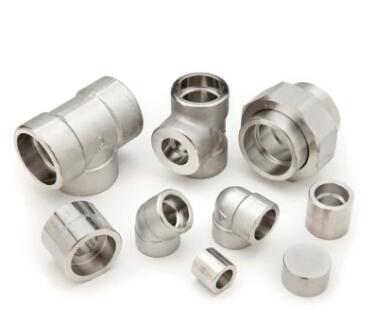The Crucial Metric: Understanding the Pressure Rating of Pipe Fittings
2023-11-30
Introduction:
In the intricate world of plumbing and fluid systems, where precision is paramount, the pressure rating of pipe fittings emerges as a critical metric. This blog explores the significance of the pressure rating of pipe fittings, unraveling its importance in ensuring the safe and efficient operation of piping systems across various applications.
1. Defining Pressure Rating:
The pressure rating of a pipe fitting is a numerical value that indicates the maximum allowable pressure the fitting can withstand within its intended operating conditions. It serves as a crucial guideline for engineers, ensuring that fittings are selected based on their ability to handle specific pressure levels without compromising structural integrity.
2. Safety Assurance:
Safety is the foremost consideration in any engineering application, and pressure ratings provide a fundamental parameter for ensuring the safety of a piping system. Fittings operating below their designated pressure rating are more likely to fail, potentially leading to leaks, ruptures, and catastrophic failures.
3. Avoidance of Catastrophic Failures:
The consequences of a pipe fitting failure can be severe, ranging from property damage to environmental hazards. Understanding and adhering to pressure ratings help prevent catastrophic failures, safeguarding both property and personnel from the potential dangers associated with high-pressure leaks.
4. Compliance with Industry Standards:
The determination of pressure ratings is often guided by industry standards and regulations. Adhering to these standards ensures that pipe fittings are designed, manufactured, and tested to meet specific criteria, providing a level of consistency and reliability across the industry.
5. Selection of Appropriate Materials:
Pressure ratings are closely tied to the materials used in manufacturing pipe fittings. Different materials exhibit varying strengths and resistance to pressure. Engineers must carefully consider the pressure requirements of a system and select fittings made from materials capable of withstanding the anticipated forces.
6. Prevention of Overloading:
Exceeding the pressure rating of a pipe fitting can result in overloading, leading to deformation, rupture, or other forms of failure. Properly assessing the pressure rating ensures that fittings are not subjected to forces beyond their designed capacity, mitigating the risk of overloading.
7. Correlation with System Design:
Pressure ratings are integral to the overall design of a piping system. Engineers must consider the pressure requirements of different sections of the system and select fittings that align with these specifications. This ensures a cohesive and harmonious design that can withstand the pressures associated with fluid transport.
8. Temperature Considerations:
Pressure ratings are often influenced by temperature conditions. Elevated temperatures can impact the structural integrity of materials, making it essential to consider both pressure and temperature when selecting fittings. Understanding the interplay between these factors is crucial for designing resilient systems.
9. Prevention of Fatigue Failure:
Cyclic loading, variations in pressure, and temperature fluctuations can contribute to fatigue failure in pipe fittings. Adhering to specified pressure ratings helps prevent fatigue failure by ensuring that fittings are not subjected to pressure conditions beyond their intended capacity, promoting longevity and reliability.
10. Risk Mitigation in Diverse Applications:
Whether in residential plumbing, industrial processes, or critical infrastructure projects, the significance of pressure ratings remains consistent. The metric serves as a universal standard for risk mitigation, ensuring that pipe fittings are selected and deployed in a manner that aligns with the demands of their respective applications.
Conclusion:
In the intricate dance of fluid dynamics and engineering precision, the pressure rating of pipe fittings emerges as a sentinel of safety and reliability. Beyond being a numerical benchmark, it serves as a guiding principle that architects and engineers rely on to ensure that piping systems can navigate the complexities of pressure without compromising their structural integrity. As industries continue to innovate and evolve, the emphasis on understanding and respecting pressure ratings remains an indispensable element in the pursuit of robust and resilient fluid transport systems.



